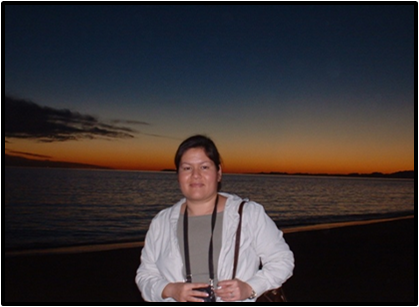Research Interests
I am interested in the study of viral disease dynamics using population genetic and phylogenetic tools, as well as assessing the population health of their host species.
Postdoctoral Experience
In 2010, I completed a one-year postdoctoral appointment at the Hubbs-SeaWorld Research Institute. My research focused on the development of PCR-based diagnostic tests for the detection of viral diseases of marine mammals. The results of this project led to the characterization of novel papillomavirus genomes in bottlenose dolphins and California sea lions. Additionally, I studied the mechanisms that contribute to viral molecular evolution such as recombination and positive selection. Results of this project have recently been published in Virology 427(2): (189-197) and Veterinary Microbiology 155:257-66.
Currently I am a postdoctoral researcher in the Pathology department of the University of California, San Diego. My research focuses on the study of microbial communities in human ecosystems and their contribution to health and disease.
Doctoral Research
In December 2008, I completed a doctoral degree in Ecology (Conservation Biology emphasis) from the University of California, Davis offered jointly with San Diego
State University. My dissertation focused on the evolutionary and population dynamics of viral pathogens and their wild marine shrimp hosts in the Mexican northwestern Pacific coast.
One
aspect of my dissertation project involved assessing the health status of wild penaeid shrimp populations by determining the prevalence and relative load of four major viral pathogens
known to cause epizootics in wild and farmed penaeid shrimp species. These included infectious hypodermal haematopoietic necrosis virus (IHHNV), Taura syndrome virus (TSV), white spot syndrome
virus (WSSV) and yellow head virus (YHV) using conventional and SYBR-Green real-time PCR.
| Additionally, I inferred evolutionary relationships, rates of nucleotide substitution and
historic population demography of IHHNV within the Gulf of California using capsid protein gene sequences and a variety of analyses (PLoS ONE 5: e11799). |
 |
The
final aspect of my work involved the study of IHHNV host species, Litopenaeus stylirostris, using the mitochondrial control region as a molecular marker to determine levels of genetic
diversity, population structure and historical population demography in the northwestern Pacific coast of Mexico (in prep).
While pursuing my doctoral degree, I collaborated in a project with the Public Health Department of San Diego State University in the detection and quantification of Hepatitis A virus and enteroviruses in coastal waters using real-time PCR (Applied and Environmental Microbiology 72: 7438-7444).
Masters Degree
For my masters project at California State University, San Marcos, I characterized Taura syndrome virus (TSV) from penaeid shrimp. This project involved
the isolation of the virus, cloning and sequencing of the full TSV genome. I studied the genome organization, genetic diversity, and phylogenetic relationships of TSV isolates (Journal of General Virology 83: 3123-30, Archives of Virology 146:941-952). I am still actively involved in this project, studying the molecular determinants of pathogenicity of newly described TSV isolates (Archives of Virology 155: 315-327).
Undergraduate Research
I conducted an undergraduate thesis project
at the Scripps Institute of Oceanography, focused on patterns of molecular evolution of acrosomal genes in abalone (Haliotis spp.). This included analysis of lysin gene sequences from different abalone species (Proceedings of the National Academy of Sciences 95:10676-10681).
|

